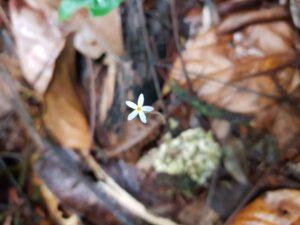How to Propagate Voyria tenella

Propagating the Ghost Plant: A Guide to Cultivating Voyria tenella
Introduction
Voyria tenella, commonly known as the ghost plant, is a captivating member of the Gentianaceae family. This elusive, achlorophyllous (lacking chlorophyll) herb boasts a striking, ethereal appearance with delicate white stems and scales instead of leaves. Its parasitic nature, deriving nutrients from its mycorrhizal fungi host, makes it a highly intriguing and challenging plant for horticultural enthusiasts. Its rarity and unique characteristics contribute to its popularity among botanists and serious plant collectors, making successful propagation a significant achievement. The absence of chlorophyll significantly impacts its propagation, presenting unique hurdles not encountered with photosynthetic plants.
Seed Germination
Currently, there are no known reliable methods for seed germination propagation of Voyria tenella. The plant’s parasitic nature and the intricate relationship with its fungal host make obtaining viable seeds and replicating the symbiotic conditions in cultivation extremely difficult. Further research into the specific fungal associations and germination requirements is crucial before seed propagation can be considered a feasible option.
Cuttings
Currently, there are no known reliable methods for propagating Voyria tenella from cuttings. The lack of chlorophyll prevents the cuttings from photosynthesizing and producing the energy needed for root development and survival, even when provided with optimal conditions and rooting hormones.
Division
Division is also not a viable propagation method for Voyria tenella. The plant’s delicate structure and intricate connection with its fungal host make any attempt to separate its parts likely to result in the death of both the plant and its fungal partner.
Tissue Culture
Tissue culture offers the most promising, albeit challenging, route to propagating Voyria tenella. However, success hinges on establishing a sterile, controlled environment that replicates the plant’s symbiotic fungal relationship. This requires specialized laboratory equipment and expertise in plant tissue culture techniques, specifically those focusing on mycoheterotrophic species. Challenges include identifying and cultivating the appropriate mycorrhizal fungi in vitro, developing a nutrient medium specifically suited to the ghost plant’s needs, and achieving successful plantlet acclimatization after culture. Rewards include the potential for large-scale propagation and conservation efforts for this rare species. However, the high cost and technical expertise required limit accessibility to this method for most hobbyists.
Conclusion
Propagating Voyria tenella presents significant challenges due to its parasitic lifestyle and dependence on its mycorrhizal fungal partner. While seed germination, cuttings, and division are not currently viable options, tissue culture may offer a pathway for future propagation success, albeit a complex and specialized one. The rewards of cultivating this unique plant, however, are great. The sheer satisfaction of successfully growing Voyria tenella, a testament to patience, skill, and dedication, far outweighs the considerable difficulty. Aspiring propagators should focus their efforts on researching and collaborating with experts in mycorrhizal fungi and plant tissue culture to advance the knowledge and techniques required for successful cultivation of this incredible ghost plant. Persistence and a willingness to learn from both successes and failures are key to eventually unlocking the secrets to its propagation.